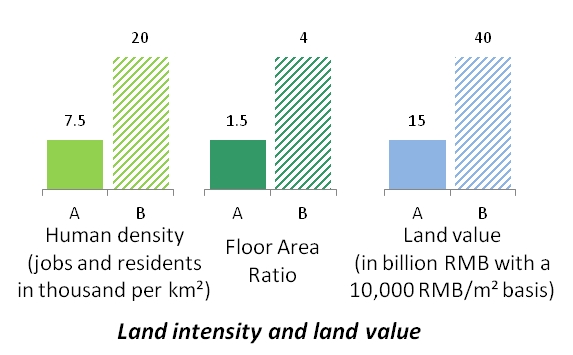QUANTITATIVE URBAN ASSESSMENT
Urban form, the spatial distribution of activities and urban organization are crucial aspects of cities’ sustainability. Urban stakeholders require quantitative and robust assessment tools to implement new paths to urban sustainability. Implementing ambitious urban development strategies and demo projects in emerging economies requires a robust assessment framework that takes into account the specificities of local urban fabrics and urban contexts. Metrics and Key Performance Indicators are essential for the definition, implementation and tracking of urban redevelopment strategies:
1. Assessing the existing and track the evolution of a district
2. Managing urban transitions on the medium and long term
3. Taking into account the specificities of local contexts
4. Providing quantitative facts on urban form, economic dynamics, social inclusion and infrastructures
5. Prioritizing investment in areas with the strongest potential
The Urban Morphology Institute has a strong expertise in designing context-specifics urban metrics, resting upon with the development of a matrix of 64 urban form quantitative indicators, published in the peer review literature. This assessment framework is the foundation of district and city scale national assessment frameworks in Italy (Protocolo Ittaca Urban) and in Portugal.


